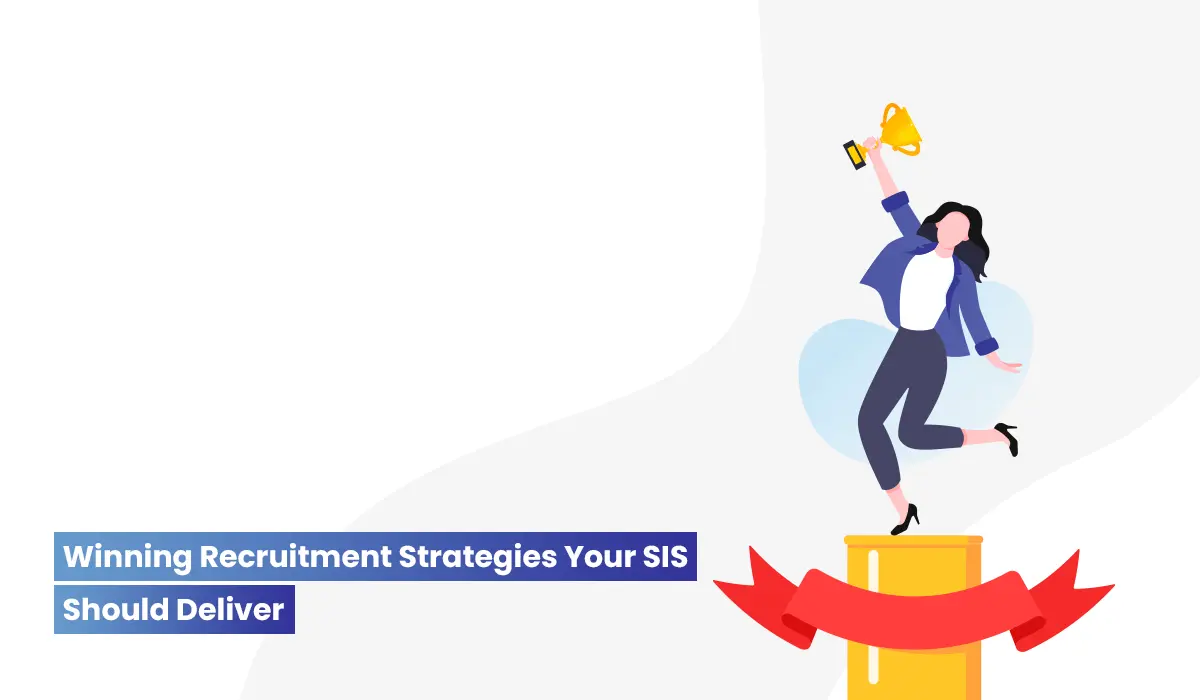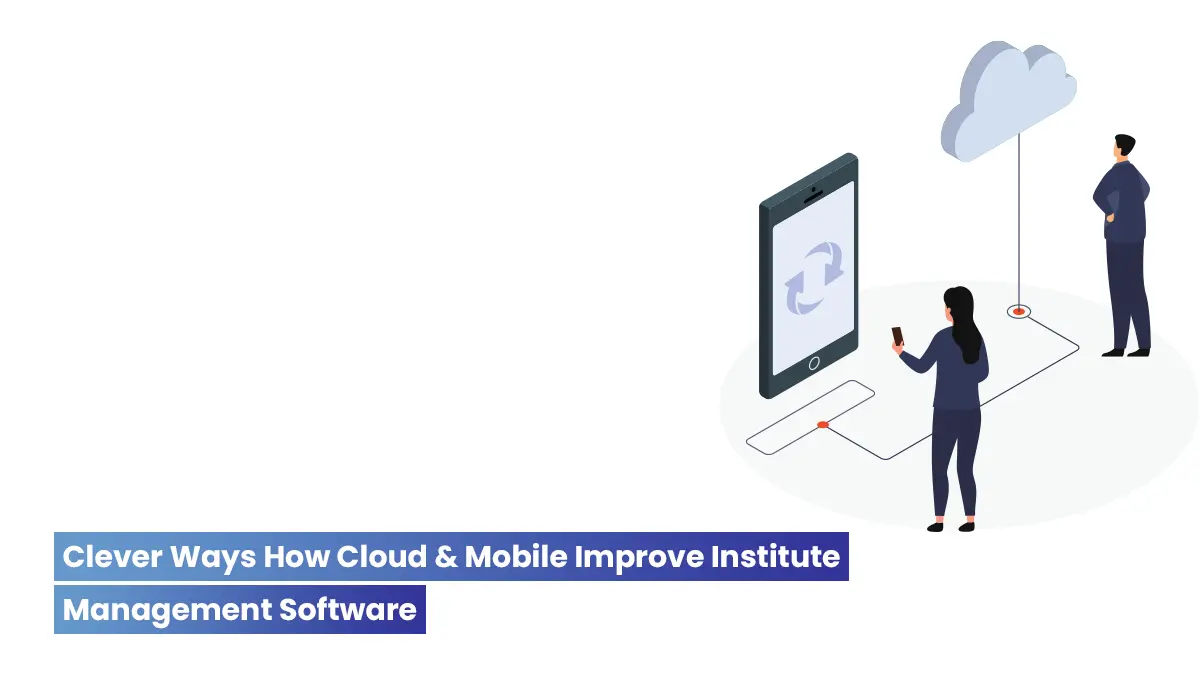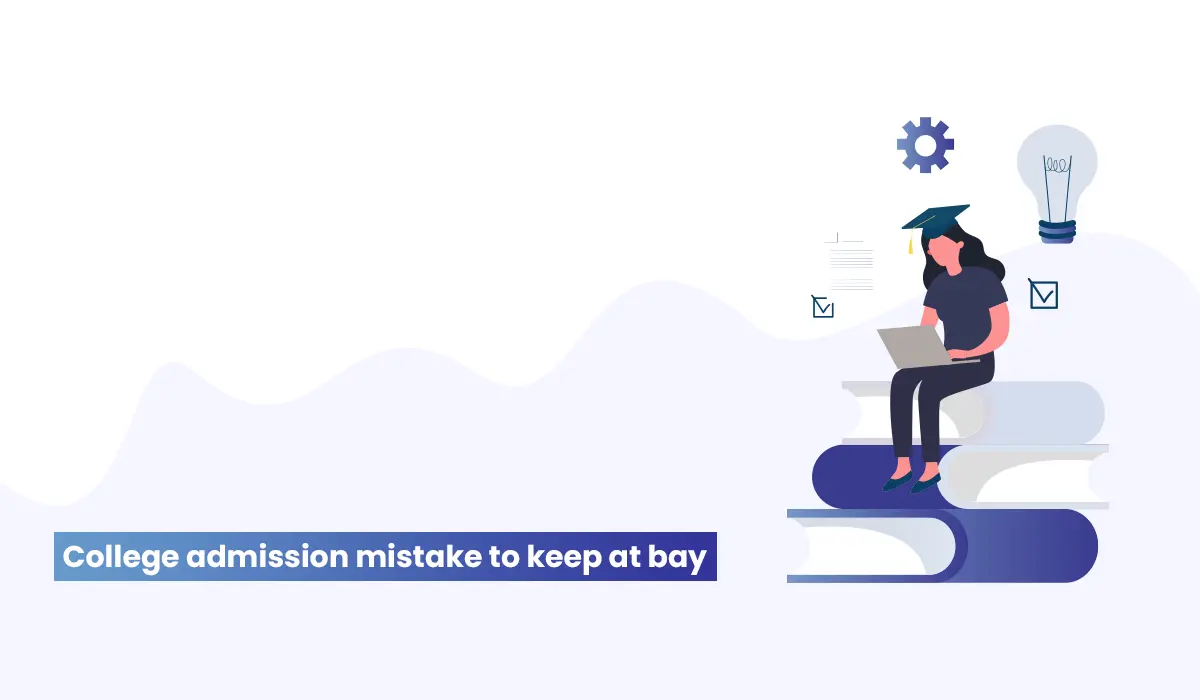Top 10 Student Recruitment strategies every institution should adopt
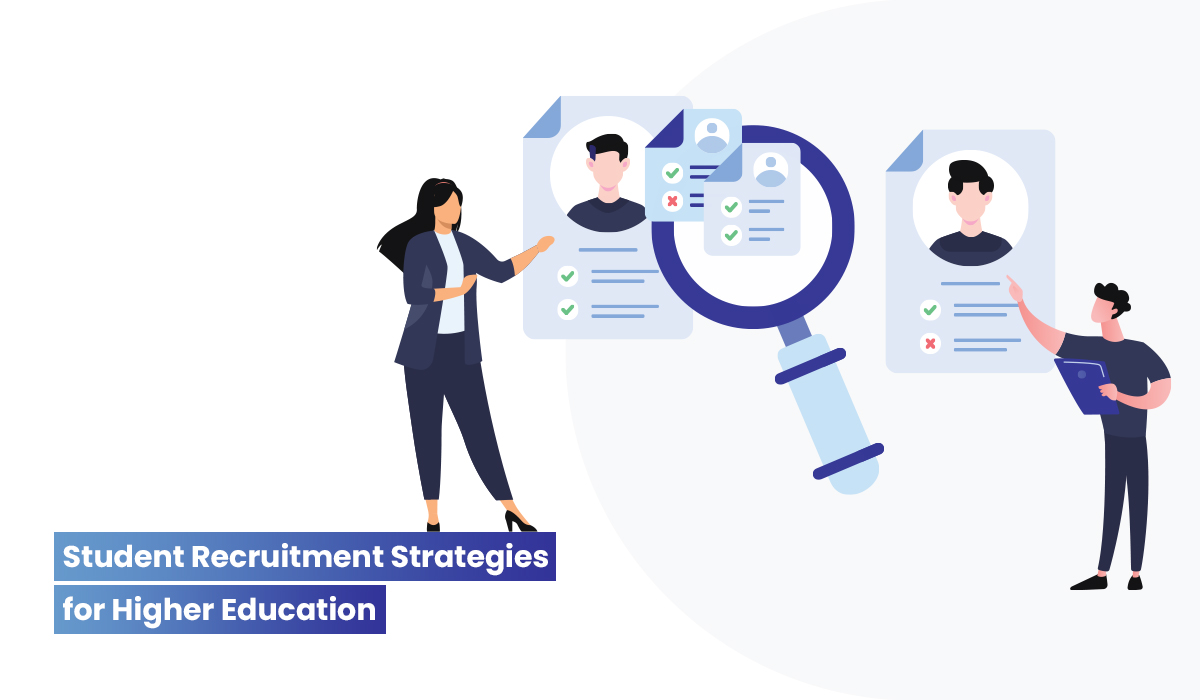
In the dynamic world of higher education, recruiting top-tier talent isn't just a process—it's an art. Every institution strives to excel in the recruitment game, searching for strategies that will not only fill classrooms but also elevate their reputation.
This blog serves as your guide to 10 essential Higher Education Recruitment strategies. These proven methods have fueled successful enrollment campaigns, driven diversity, and amplified institutional excellence. Prepare to dive into the world of recruitment, where these strategies are the key to unlocking success for your higher education institution.
What is Student Recruitment?
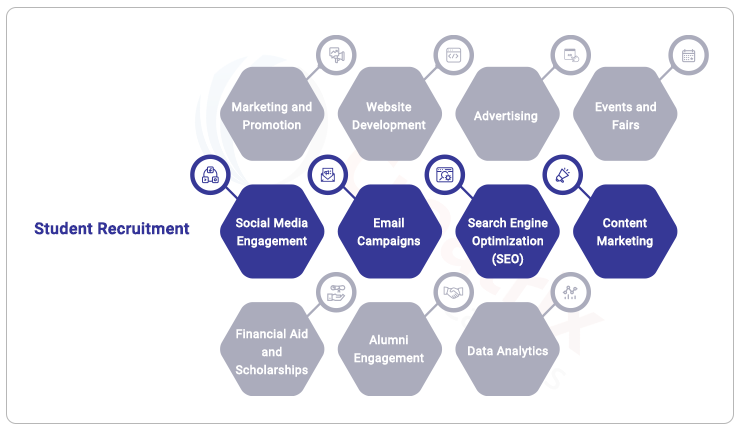
Student recruitment is the process of attracting and enrolling students into educational programs. It involves marketing, engagement, application, admission, financial aid, and communication to help students make informed decisions about their education.
Top 10 Student Recruitment Strategies for Higher Education Institutions
- Define your Goals through Branding
- Invest in Marketing and Promotion
- Tell your Unique Selling Points
- Develop a Reliable and Appealing Website
- Offer Financial Aid and Scholarships
- Campus Tours and Open Houses
- Nurture Leads with Personalized Communication
- Leverage Data Analytics
- Alumni Engagement
- Automate Recruitment Process

Recruitment Strategy 1: Define Your College's Brand
Before embarking on any student recruitment efforts, it's essential for higher education institutions like yours to have a clear and compelling brand identity. Your college's brand is not just its logo or name; it's the essence of what your institution stands for and the unique value it offers to students. It helps students understand why your institution is unique and how it aligns with their academic and personal goals. A strong brand attracts students who resonate with your institution's values, culture, and educational offerings. It creates an emotional connection that goes beyond course catalogs and statistics.

How to Implement?
Enrollment Targets: Set specific enrollment targets for different programs, if applicable. For example, aim to enroll 500 undergraduate and 200 postgraduate students for the upcoming academic year.
Program Prioritization: Identify which academic programs or departments require more attention in your recruitment efforts based on demand and capacity.
Demographics: Determine the demographics of your target students. Are you primarily recruiting locally, nationally, or internationally? What age group and academic backgrounds are you focusing on?
Timeline: Establish a recruitment timeline with milestones for each goal. For instance, by the end of Q1, you aim to have received 50% of your total applications.
Example:
As the admissions director for a liberal arts college, your aim is to boost international student enrollment by 15% in two years, focusing on business and tech programs. Your target audience includes students aged 18-24 from Asia and Europe, and you've outlined a timeline with actions such as attending fairs and hosting webinars to achieve this goal.
Recruitment Strategy 2: Invest in Marketing and Promotion
Effective marketing ensures that your institution is on the radar of potential students. It creates awareness and generates interest. Allocate resources to create compelling marketing campaigns that showcase your institution's strengths, values, and opportunities. Consistent, well-crafted marketing materials help in building a strong and appealing institutional brand. Utilize various channels, both online and offline, to reach a wide audience.

How to Implement?
Multi-Channel Approach: Utilize a mix of channels, including social media, email marketing, website optimization, print materials, and participation in education fairs.
Content Marketing: Create informative and engaging content that showcases your institution's programs, faculty, campus, and student life.
Segmentation: Tailor your marketing messages to specific segments of your target audience. For instance, highlight scholarship opportunities for academically strong students.
Tracking and Analysis: Use data analytics to track the performance of your marketing campaigns. Adjust your strategies based on what works best.
Example:
Suppose you're responsible for marketing at a state university. To attract more high school graduates from within the state, you can launch a campaign using student videos, social media, geo-targeting, and personalized emails to attract in-state high school graduates.
Recruitment Strategy 3: Tell Your Unique Selling Points
Highlighting your institution's unique selling points (USPs) is a crucial strategy. Identify what sets your college or university apart from the competition. Unique features can be powerful attractors. When students resonate with what you offer, they are more likely to apply and enroll. Whether it's exceptional faculty, cutting-edge facilities, a vibrant campus culture, or specialized programs, make sure prospective students know why your institution is the right choice for them.

How to Implement?
Identify USPs: Collaborate with faculty, staff, and students to identify your institution's unique strengths. These could include research opportunities, community engagement, or global study programs.
Craft Compelling Stories: Develop compelling narratives or stories around your USPs. Use these stories in your marketing materials, website content, and admissions conversations.
Tailored Messaging: Customize your messaging for different audiences. For example, emphasize career-focused programs when communicating with prospective graduate students, while highlighting campus life for undergraduates.
Example:
Imagine working for a small liberal arts college known for its close-knit community and personalized attention. Your unique selling point (USP) is the exceptional faculty-student ratio, enabling individualized mentoring. In recruitment materials, you feature student success stories with dedicated professors and alumni achievements from the supportive environment.
Recruitment Strategy 4: Develop a Reliable and Appealing Website
Your institution's website serves as a virtual front door. It's often the first interaction prospective students have with your institution. Ensure your website is user-friendly, informative, and visually appealing. It should provide all the necessary information about programs, admissions, campus life, and more.
How to Implement?
User Experience (UX) Design: Invest in a user-friendly design that offers intuitive navigation, responsive layout, and quick load times.
Comprehensive Content: Include detailed program information, admission requirements, financial aid options, virtual campus tours, and contact details.
Visual Appeal: Use high-quality images and videos to showcase your campus, student life, and academic facilities. Blog or News Section: Regularly update your website with relevant content, such as blogs, news, and success stories.
Example:
As a liberal arts college webmaster, you revamp the website for greater appeal. The redesigned homepage boasts a dynamic slider highlighting campus life, faculty, and student achievements. Each academic program gets a dedicated section with videos, faculty profiles, and current student testimonials. Additionally, the website hosts a blog covering admissions tips, alumni successes, and faculty research.
Recruitment Strategy 5: Offer Financial Aid and Scholarships
Financial considerations often play a significant role in students' decision-making. Develop a robust financial aid program and offer scholarships to attract and retain top talent. Clearly communicate these opportunities to prospective students.
How to Implement?
Diverse Scholarships: Offer a range of scholarships, including merit-based, need-based, and program-specific awards.
Transparent Information: Provide clear and easily accessible information about financial aid options, eligibility criteria, and application deadlines.
Personalized Guidance: Offer financial aid counseling to help students navigate the process.
Example:
At your university, a range of scholarships awaits, from academic excellence awards to leadership scholarships and need-based grants. The financial aid webpage offers comprehensive information on each opportunity, including eligibility criteria and a step-by-step application guide.
Recruitment Strategy 6: Campus Tours and Open Houses
Inviting prospective students to visit your campus can be a game-changer. Campus tours and open houses allow them to experience the environment, interact with faculty and students, and get a feel for campus life. This sort of strategy helps create a personal connection between students and your institution.
How to Implement?
Scheduled Tours: Regularly schedule campus tours led by knowledgeable guides who can answer questions and highlight key features.
Open House Events: Host open house events where students can explore academic departments, meet faculty, and attend information sessions.
Example:
Try hosting monthly campus tours and quarterly open house events, providing students with firsthand experiences of campus life and academic programs.
Recruitment Strategy 7: Nurture Leads with Personalized Communication
Implement a lead nurturing program to maintain a relationship with prospective students. Nurturing keeps your institution on prospective students' radars. Personalized communication demonstrates your institution's interest in individual students.
How to Implement?
Segmented Lists: Divide your leads into segments based on interests, academic programs, or engagement level. Tailored Content: Create content that speaks directly to each segment's needs and concerns.
Automated Workflows: Use email automation to send relevant information at the right times.
Example:
Your university uses a Customer Relationship Management (CRM) system to segment leads. Prospective students interested in engineering receive emails about the program's unique features, faculty profiles, and success stories. Those inquiring about campus life receive messages highlighting clubs, events, and dormitory options.
Recruitment Strategy 8: Leverage Data Analytics
Harness the power of data analytics to make informed recruitment decisions. Analyze historical data, applicant behavior, and demographic trends to refine your strategies. They provide insights that help you optimize recruitment efforts.
How to Implement?
Data Collection: Gather data on website traffic, social media engagement, application rates, and conversion rates. Analysis Tools: Utilize analytics tools to process and interpret the data.
A/B Testing: Conduct A/B tests to refine messaging and user experience based on data-driven findings.
Example:
Your institution uses Google Analytics to track website traffic. By analyzing user behavior, you discover that a significant number of visitors drop off during the application process. You optimize the application form's user interface, reducing friction and increasing conversion rates.
Recruitment Strategy 9: Alumni Engagement
Engage your alumni as ambassadors. Their success stories and positive experiences can be powerful recruitment tools. Encourage alumni involvement in outreach and mentoring programs.
How to Implement?
Alumni Stories: Share alumni success stories in marketing materials, on social media, and on your website.
Networking Events: Organize alumni-student networking events, where prospective students can connect with graduates.
Invest in Alumni Management Software: This helps automate and streamline all connections with your Alumni.
Example:
Your university's alumni association hosts an annual "Alumni Career Fair" where graduates from various fields return to campus to share their career journeys with current students. These events foster connections and inspire students.
Recruitment Strategy 10: Automate Recruitment Process
Streamline and automate repetitive tasks in the recruitment process. Automation reduces manual workload and allows staff to focus on strategic tasks. Use technology to manage inquiries, applications, and communications efficiently. Automated processes ensure a consistent experience for all applicants.
How to Implement?
Admission CRM: Invest in a comprehensive Admission CRM system that includes workflow automation.
Automated Emails: Set up automated email sequences to send timely and relevant information to applicants.
Example:
Your college uses an admission CRM that automates follow-up emails to applicants. For instance, when a student completes an inquiry form, the system.
Closing Thoughts - Elevate Your Student Recruitment and Enrollment Services with Creatrix Campus
At Creatrix Campus, we take student recruitment and enrollment services to the next level. With our in-depth marketing expertise, flexible student lifecycle management, and unwavering commitment to student engagement, retention, and experience, we're here to drive your institution's success.
Our tailored enrollment marketing campaigns are designed to capture the attention of prospective students and set you on the path to excellence. We help with
- In-depth marketing
- Student enrollment
- 360-degree flexible student lifecycle management
- Student engagement & retention
- Student experience
Reach out to us today to explore how Creatrix Campus can transform your student recruitment efforts. Connect with us now and unlock a world of possibilities.

